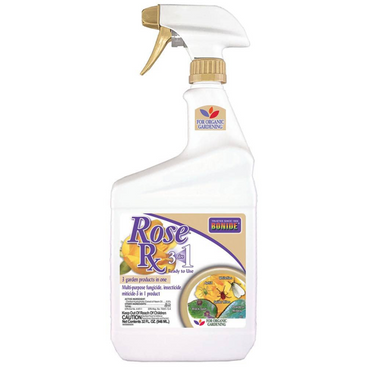It's the time of year where are gardens are getting put to bed, and we are harvesting as
much as we can of what's left. Let's go over how to harvest, and use your herbs!

Before we get into the nitty gritty of it all, let's go over some important terms:
Foliage herb: herbs you harvest the leaves from
Example- Basil, sage oregano, rosemary, thyme, etc...
Flower herbs: herbs you harvest the flowers from
Example- Chamomile, lavender, bee balm, etc...
Seed herbs: herbs you harvest seeds from
Example- Coriander, fennel, dill, etc...
Harvesting-
Time of the day is really important when it comes to harvesting herbs. Herbs have more flavor in the morning, and they lose their oils as the day goes on from the sun and heat. If you’re going to preserve, or want the most flavor for cooking, harvest in the morning.
The time of year can be important when harvesting herbs (If you are harvesting right before your last frost, you can ignore this next part for now). For foliage herbs, you will want to harvest before the plant bolts or goes to seed. Once a plant starts to bolt, it will be spending its energy trying to reproduce and spread its seed instead of reserving that energy to put into the foliage. For flowering herbs, harvest when the flowers open all the way. Lastly, for seed herbs you will want to harvest when the seeds have matured and dried.
There are a few tools that can assist you with harvesting. They are pictured below.
There are a few different ways to harvest, depending on what you are harvesting.
Harvesting leaves:
Branched herbs- cut from the new leaf growth
Stalk herbs- cut down to the soil
Both methods will generate new growth.
Harvesting flowers:
Pinch or snip off the flowers as they open and remove the entire flower head
For lavender, harvest by cutting the stalks where they emerge from the plant before the blossoms open
Harvesting seeds:
Let seed heads dry and turn brown, then harvest
Dill can be harvested in the green seed stage as well and be used in pickling
If you are looking for more information on seed harvesting, read our seed harvesting blog here: https://www.gvgh.com/post/seed-harvesting
Drying-
There are many different ways to dry herbs, I am going to go over five of the methods today.
Traditional method- take a bunch and hang it upside down in a dark and dry basement, attic, or closet
Air drying- (dry in a bunch like as previously mentioned) or pluck the leaves from the stem and lay them out on a rack or tray
Microwave drying- separate leaves from the stems and wash what you want to save. Once dry, microwave between two paper towels for one minute
Dehydrating- put leaves on a single layer tray and cook at the lowest setting for approximately 2-4 hours
Oven drying- use a silicone mat, muslin, or cheese cloth. Lay out the herb leaves and set your oven to the lowest setting and bake for 30 minutes
Just like harvesting, there are some helpful tools for drying as well.
Another way to preserve your herbs is by freezing them. Simply clean and chop them up as desired, then put in a sealed bag and toss them in the freezer. Then, when you want to use them just grab some out of the bag and add to your dish. They'll taste fresh out of the garden! Here's a list of some herbs that are recommended to freeze...
Basil
Chives
Cilantro
Dill
Marjoram
Mint
Oregano
Parsley
Rosemary
Thyme
Sage
Cooking-
When cooking with herbs, there are some that are better used fresh, or better used dried. I have a list here but remember, taste is subjective!
Herbs best used fresh
Cilantro
Parsley
Basil
Mint
Dill
Chives
Sage
Herbs best used dried
Oregano
Marjoram
Thyme
Rosemary
Bay leaf
Fennel seed

Different herbs are staples in different dishes and cultural foods. I have a few examples laid out below.
Poultry- | Seafood- | Salads- | Italian- |
Bay leaves | Bay leaves | Basil | Basil |
Lemon balm | Marjoram | Cilantro | Oregano |
Lemon grass | Thyme | Chives | Sage |
Pineapple sage | Chives | Dill | Rosemary |
Rosemary | Mint | Lemon balm | Thyme |
Thyme | Rosemary | Mint | |
Basil | Dill | Parsley | |
Bee balm | Parsely | Tarragon | |
| Sage | | |
| Lemon balm | | |
| Tarragon | | |
Extra Information-
If you want to bring your herbs in to use during the winter, there are a few ways you can do that. First there is propagating. There are a couple of herbs that are very easy to propagate for winter use; basil, lavender, lemon balm, mint, and rosemary. Just snip the new growth (green stem), strip the leaves on the bottom few inches and stick it in some water!
You can also pot up your garden herbs. Make sure to find an appropriate size pot that will comfortably fit the root system. After potting it up, make sure to treat for pests before bringing it into your home. RoseX or Neem Oil works well on the foliage and is safe to use on edible plants. Diatomaceous earth is a white powder that that you mix into the soil to kill any pests in the pot. Once treated and brought in, make sure to water and trim to keep it healthy and vigorous!
Remember, have fun with it! Try a method you haven't heard of before.
Happy harvesting:)
-Megan























Comments